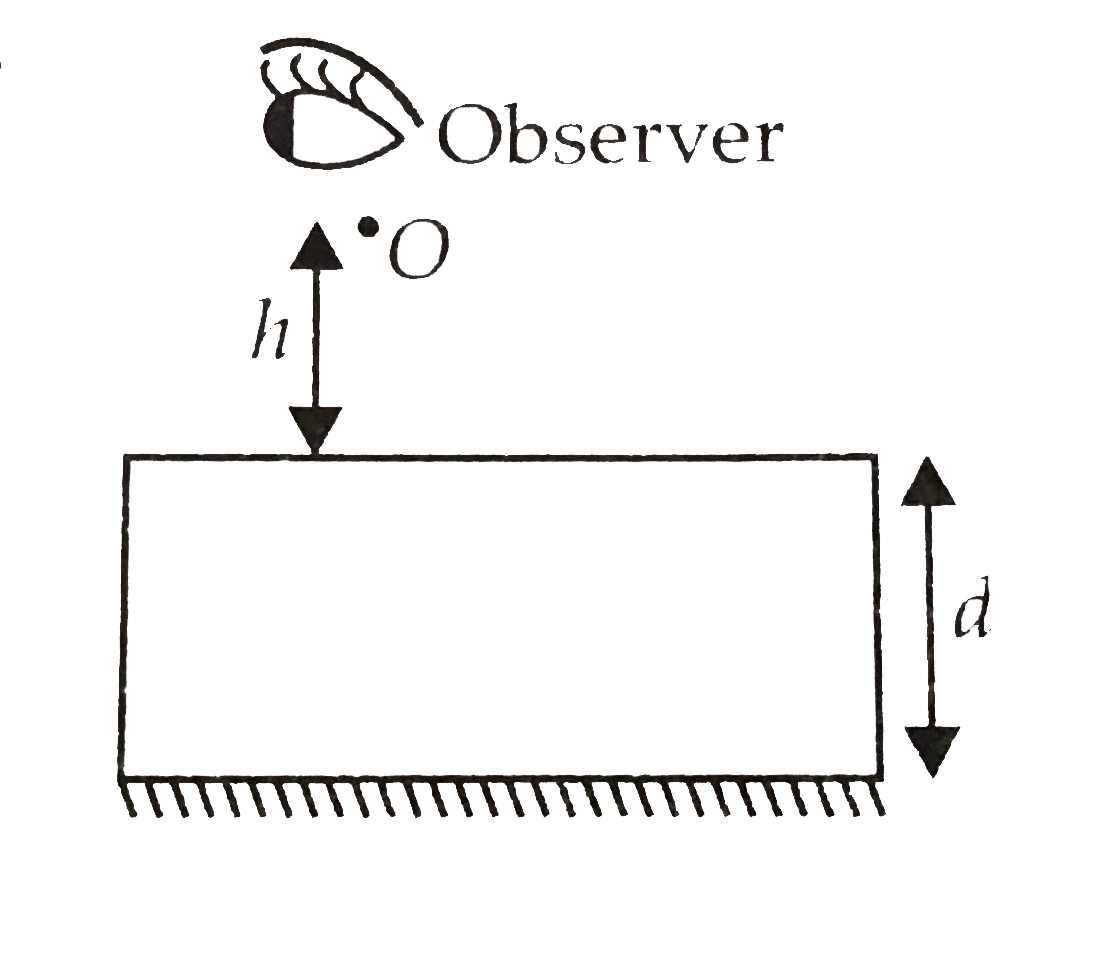In the figure shown, how many images of the star will an observer at O see?
_E01_006_Q01.png) Solution in Gujrati
Solution in Gujrati
1
2
3
4
The correct Answer is:D
As angle between the two mirror less than 90∘ so number of images formed is greater than 3.
Topper's Solved these Questions
- GEOMETRICAL OPTICSBOOK - ALLEN CHAPTER - GEOMETRICAL OPTICSEXERCISE - EXERCISE-2
44 Videos
- GEOMETRICAL OPTICSBOOK - ALLEN CHAPTER - GEOMETRICAL OPTICSEXERCISE - EXERCISE-3
12 Videos
- GEOMETRICAL OPTICSBOOK - ALLEN CHAPTER - GEOMETRICAL OPTICSEXERCISE - EXERCISE - 05 (B) (ASSERTION & REASON )
9 Videos
- CURRENT ELECTRICITYBOOK - ALLEN CHAPTER - CURRENT ELECTRICITYEXERCISE - EX.II
66 Videos
- GRAVITATIONBOOK - ALLEN CHAPTER - GRAVITATIONEXERCISE - EXERCISE 4
9 Videos
Similar Questions
Two mirrors are inclined at angle θ as shown in figure. Light rays are incident parallel to one of mirrors. Light will start retracing its path after the reflection if
View SolutionPlane mirrors are arranged parallel to each other as shown in column-I and the number of images formed by the combination is in column- II
_E01_090_S01.png)
View SolutionStatement-1: The total translational kinetic energy of fall the molecules of a given mass of an ideal gas is 1.5 times the product of its pressure and its volume because.
Statement-2: The molecules of a gas collide with each other and the velocities of the molecules change due to the collision.
View SolutionIn the Bohr's model of hy drogen atom, the electron moves around the nucleus in a circular orbit of radius 5×10−11m. Its time period is 1.5×10−16s. The current associated with the electron motion is:-
View SolutionAssertion : The difference in the value of acceleration due to gravity at pole and equator is proportional to square of angular velocity of earth.
Reason : the value of acceleration due to gravity is minimum at the equator and maximum at the pole.
View SolutionIn the arrangement shown in figure., the image of the extended object as seen by the observer is

View SolutionIn the arrangement shown in figure, O is the object. An observer is to the left of convex lens and looking towards lens. The observer will see an image
View SolutionThree plane mirrors are kept as shown in the Figure A point object (O) is kept at the centroid of the triangle seen in the Figure. How many images will be formed?
View SolutionA point luminous object (O) is at a distance h from front face of a glass slab of width d and of refractive index mu . On the back face of slab is a refracting plane mirror. An observer sees the image of object in mirror as shown in figure. Distance of image from front face as seen by observer will be
View SolutionSee the situatiion shown on figure (1) Find the positiion of image as seen by observe A . (2) Find the position of image as seen by observe B .
View SolutionShow the Part of the image which man can see in the mirror as shown in the figure.

View SolutionFindout the distance between image and the mirror as observed by observer in the figure shown below

View SolutionHow many images do we see between two parallel mirrors ?
View SolutionRam planned an activity to observe an object through pipes as shown in figure,so that he could see objects which he could not directly see.a) Mention how many mirrors should he use to see the object.
View SolutionA point luminous object (O) is at a distance h from front face of a glass slab of width d and of refractive index μ. On the back face of slab is a reflecting plane mirror. An observer sees the image of object in mirror as shown in figure. Distance of image from front face as seen by observer will be

View SolutionFind the position of final image of an object O as shown in figure.

View Solution
